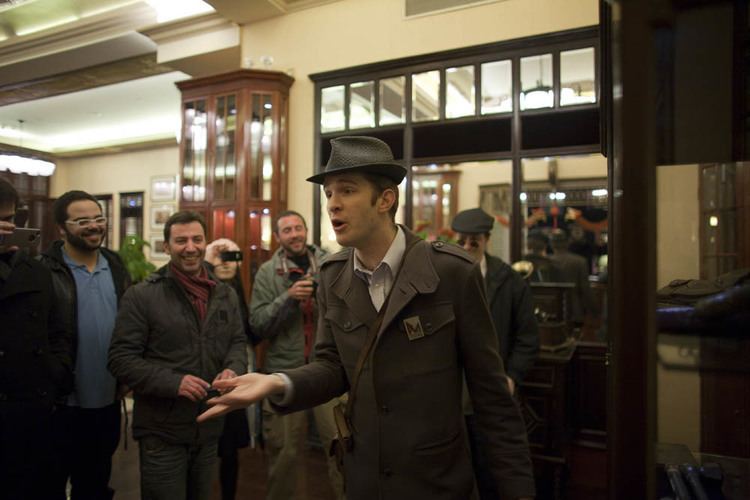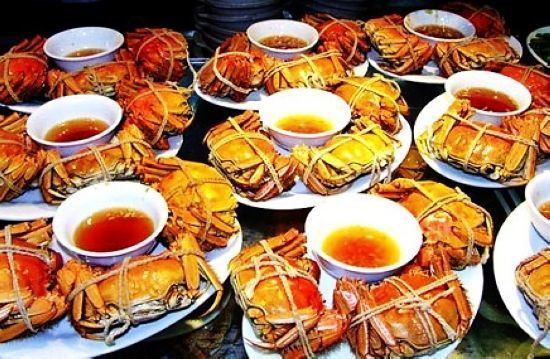Country China Population 1.24 million (2000) Area 1,264 km2 | ||
 | ||
University Changshu Institute of Technology | ||
Map of Changshu
Changshu (Chinese: 常熟; pinyin: Chángshú; Wade–Giles: Ch'ang-shu; Suzhounese: Zaon去 so平; literally: "evergrow") is a county-level city under the jurisdiction of Suzhou, Jiangsu province, and is part of the Yangtze River Delta. It borders the prefecture-level city of Nantong to the northeast across the Yangtze River. Due to the mild climate and terrain there, it has enjoyed a high level of agriculture civilization since ancient times, and is named after this, for the first character of its name (常) means "always, often", while the second (熟) means "ripe". The name of the adjacent county-level city of Taicang means "great granary".
Contents
- Map of Changshu
- Crowne plaza hotel changshu
- Xinjiang food festival in changshu
- History
- Economy
- Development Zones and Ports
- Administrative divisions
- Towns and subdistricts
- DiscontinuedMerged towns
- Infrastructure
- Forest farm
- Clothing and fabric market
- College and universities
- High schools
- Vocation schools
- Social Welfare Institute
- Gardens and parks
- Hills
- Archaeological sites
- Transportation
- Famous people
- References

Changshu comprises 9 towns and 2 subdistricts and two provincial economy and technology development districts. As a historically and culturally famous city, Changshu is known for its long history, beautiful scenery and prosperity. It is one of the most well developed counties in China: its GDP reached 97.2 billion yuan in 2007, and GDP per capita reached 91,846 yuan (ca. US$12,000), ranking among the top 10 county-level divisions nationally. In 2010, GDP per capita reached US$21,473, ranking the fourth of the counties and cities of Jiangsu Province.

Crowne plaza hotel changshu
Xinjiang food festival in changshu
History

Changshu first became an independent county in 540 AD, but in 581 was made subordinate to Suzhou. It was promoted to seat of a full prefecture in 1295, was rebuilt and fortified in the 14th century, but in 1370 was reduced again to the level of a county. In the 15th and 16th centuries Changshu was several times attacked by Japanese pirates.
Changshu has traditionally been a market town for locally produced rice, corn, wheat, tea, and mulberry leaves, and since the 13th century has been a major cotton-producing district. Although administratively still a subordinate city to Suzhou, it is a provincial base of foreign trade. Currently a harbour is being developed on the Yangtze River near Changshu to service Suzhou and Wuxi.
Economy
Changsu has experienced economic growth of 15–20 percent for the last 20 years. In 2007, Changshu had a GDP of RMB97.6 billion, an increase of 18 percent from 2006. Of this, only 1.8 percent comes from the primary industry, whereas 59.18 percent is derived from the secondary industry and the tertiary industry makes up the remaining 39 percent.
The city’s major industries include textiles, paper-making, fine chemicals, machinery, steel and forestry products. The city has more than 4,000 textile and apparel companies with combined annual sales of RMB50 billion. The paper-making industry has attracted more the US$15 billion of FDI. By the end of 2007, this industry exceeded 2.4 million tons.
More than 2,000 foreign enterprises have invested in Changshu including big names such as Sharp and Dunlop. Of the contracted investment at least one-third has come from Taiwan – more than 500 Taiwan enterprises have invested more than US$100 million in the city. UPM-Kymmene from Finland has been running a paper mill in the city since 1999 and now has an annual capacity of 200,000 tons of coated and 600,000 tons of uncoated fine paper. Changshu’s import and export rate has also increased in recent years with imports going up by 88.4 percent to US$3.89 billion and exports rising 60.4 percent to US$6.74 billion in 2007.
Development Zones and Ports
Administrative divisions
Changshu is divided into 9 towns and 2 subdistricts.
Towns and subdistricts
Discontinued/Merged towns
Infrastructure
The China National Highway 204 Yantai-Nantong-Changshu-Shanghai, Sujiahang Expressway and Suzhou-Jiaxing-Hangzhou all pass through Changshu. Changshu has one Yangtze River crossing, the Sutong Yangtze River Bridge, one of the longest cable-stayed bridges in the world.
Changshu harbor is ranked sixth out of China’s inland river ports and supports both the Shanghai port and the Suzhou Industrial Park. It currently has 12 docks, with another nine being constructed, operating to 212 ports worldwide.
Forest farm
Clothing and fabric market
Known as "China's textile industry base in the city" and " China leisure clothing city", it is an important national clothing industry base and gains the" clothing world " reputation. It became one of "China's top ten clothing wholesale market" in 2004-2005.
College and universities
High schools
Vocation schools
Social Welfare Institute
Changshu Social Welfare Institute (No. 39, Bei Men Da Jie, Changshu City)
Gardens and parks
Hills
Archaeological sites
Transportation
Famous people
At least four famous painters came from Changshu:
